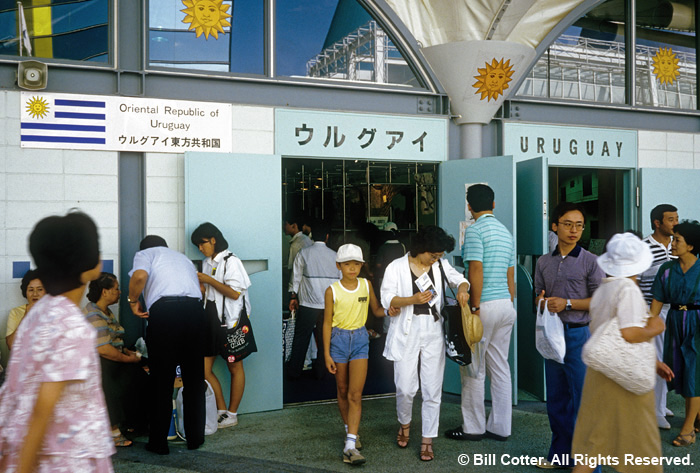Uruguay
"Science and Technology in Human Life”
Uruguay, exactly opposite Japan on the globe, is situated in the middle of the pampas (plains) that also extend into Argentina and a large area of southern Brazil. Uruguay is the twelfth largest country in Latin America. With a total area of 176,000 km², roughly one half the size of Japan, Uruguay is the twelfth largest country in Latin America. The population is approximately 2.96 million (1982).
Uruguay's climate is temperate, with temperatures in the cold season, from June to September, rarely falling below 5°C (41°F). In the summer season, from December to March, the average temperature hovers around 23°C (73°F), and thus the weather is pleasant year-round. Since the land is almost entirely plains and slopes, agriculture and livestock flourish in this moderate environment.
The majority of Uruguayans are descendants of Spanish or Italian immigrants, with blacks from Brazil accounting for 3%, and mulattos for 8%. Nearly half of the population lives in the capital city of Montevideo, and the total urban population is 83%.
Anglo-French influence on culture and lifestyle is still strong, and the cities of Uruguay abound with the flavor of southern Europe. The national sport is soccer. Uruguay won the world championship in 1930 and in 1950, and enthusiasm for the sport is such that the Centenario Stadium with a capacity of 80,000 is often full. An extremely high level of education exists, and Uruguay's illiteracy rate is a low 5.7%.

Ever wonder why the country's official name is "Oriental Republic of Uruguay"? Here's some information courtesy of Wikipedia: In Spanish colonial times, and for some time thereafter, Uruguay and some neighboring territories were called Banda Oriental [del Uruguay] ("Eastern Bank [of the Uruguay River]"), then for a few years the "Eastern Province". Since its independence, the country has been known as "República Oriental del Uruguay", which literally translates to "Republic East of the Uruguay [River]". However, it is officially translated either as the "Oriental Republic of Uruguay" or the "Eastern Republic of Uruguay." (CD #5 Set 10 #31)
